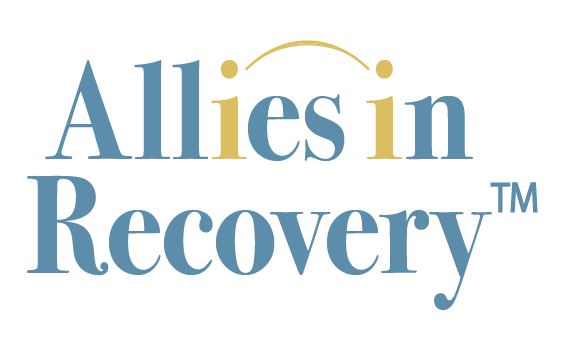Her Daughter Is Using Pills Seemingly 24/7 –Some Tips on the CRAFT approach When You’re Not Exactly Sure When She’s Using

This Allies member and her family are embracing CRAFT principles more and more and are ready to act. But “rewarding/not rewarding” feels complicated because her daughter uses pills, seemingly 24/7, and the family is unsure of exactly what substances are in the mix or when she is using. The use is serious – the daughter even had an overdose. Two video clips from our own CRAFT Training Modules are featured in our answers below. Read on…
with Louise Stillman, MSc, Editor
This question originally appeared on the Allies in Recovery Member Discussion Blog, where experts respond to members’ real-life questions and concerns.
“How can I apply rewarding behavior for non-use when my daughter is on prescriptions all the time and lives on her own? I really can’t tell when she is not using them, unless I happen to suspect she’s in withdrawals from not getting one of her prescriptions? She is using multiple prescriptions and has had an overdose recently and does not think she caused the overdose. She was even mad at the medical staff for keeping her there for 3 days and cutting her clothes off to treat her. I believe she had a life-threatening seizure, but she would not allow any of the doctors at the hospital to talk to me. Our family is working on a treatment plan and an invitational intervention, and our hope is that she will attend and get the help we are offering. She has been very responsive to our attempts to invite her to do things together such as exercise, come to be with family for Thanksgiving, play virtual reality games with her brother, etc. But we can never really tell when she is not using. She’s admitted she’s dependent on the prescriptions, and to a person outside the family, admitted that she knows she is in trouble with drug use and needs help – but has said nothing to family. I’m encouraging our intervention team to sign up for Allies in Recovery and learn all they can, and hopefully they will. We all agree that she needs help and cannot afford to pay for it herself, and Medi-Cal coverage is absolutely appalling. Thank you for any insight you may have. Blessings.”
When your loved one “always appears high,” it’s hard to identify non-use
It is indeed hard to separate “use” from “non-use” in your Loved One when you don’t spend much time with them or when they appear to be always high. Your daughter is dependent on those pills, and she is also addicted to them. She is dependent because stopping causes withdrawal; she is addicted because she is playing with the drugs, taking too many, and/or combining them. But we have some suggestions that can help…
CRAFT skills help to gain clarity with your loved one’s pattern of use
It’s tricky in your case, because your daughter is likely using a combination of drugs. The regular use of drugs in many cases increases the tolerance and therefore the need for more than a regular prescription amount. Has she ever been diagnosed with any other conditions such as ADHD, depression, or anxiety? If so, there could be an ADHD drug, anti-anxiety, or antipsychotic in the mix.
Your instinct is right: you do need more specificity. I know this is hard with her, but your family will benefit from learning more and then doing some educated guessing, to assemble as much of the bigger picture as you’re able. The Key Observations exercises in the video clip below (from the Allies member site) provide detailed questions and suggest answers to help you gain more insight into her patterns of use.
The exercises will help you build your awareness of when your daughter is using or not using, helping you to identify the “ABC’s” of your loved one’s use. You will learn to build your awareness of the patterns of their use and learn the best way to respond. Awareness and identification of when your loved one is using is a basic building block of CRAFT.
You already have some idea of what your daughter is like in various states: when she is (A) high; (B) when she is just okay – perhaps using just enough to “maintain” and not get sick; and (C) when she is in withdrawals.
All this being said, it is likely given your physical distance from her, and the nature of the substances she is misusing, that you will never be 100% sure, or even 50% sure, of when and what she is using. But this is true for many of our members. The job is to drill down using the Exercises in Module 3 and take your best-informed guess based on your answers to those exercises.
Some basic CRAFT steps we recommend include:
What we recommend, based on CRAFT: You don’t ask her if she is using. You don’t look for 100% proof of her use before you dare to act. You get the big picture as best you can, and then respond in a CRAFT-informed way. You and the others present in your family, in that moment, have to decide whether or not she is using, and then line up your behavior accordingly.
Not Using? Reward. Using? Take away those rewards, allow natural consequences, and remove yourself. These are some of the basics of the CRAFT approach. This video clip from the Allies Training Module 1 gives a brief summary:
How can our family move forward with CRAFT now?
I love that you’ve assembled an “invitational intervention” team. Welcome, team! We can all use a team. We at Allies want to emphasize that the version of intervention we’d advocate is one where everyone strives to increase their connection – not threaten to cut it off. This TED talk can help explain why – because it’s about the strength of your connection to your loved one that will help you help them – and that’s what CRAFT is based on.
It is wonderful you are all willing to learn an approach that will make sense and allow you to all get on the same page. Often only one family member has been learning CRAFT, but when everyone learns the CRAFT skills, you have a greater chance of success. There is a lot of love there.
CRAFT online: Give yourself 6-8 weeks to start really seeing results
We ask that you give us 6-8 weeks to walk you through the steps of CRAFT — and to give yourselves time to practice. Whether you do this alone, or whether you are lucky enough to have other family members willing to try CRAFT, you will get better at recognizing, in the moment, whether your daughter is high or not. High or not is determined by how she looks, sounds, and acts. If you can all agree on the indicators of whether or not she is high, so much the better.
For example, we worked recently with a family whose loved one was likely using methamphetamines, but no one was talking about methamphetamine, especially not the loved one. This despite the mother having seen a pipe and a vial of blue crystal, and had taken a picture and shown a pharmacist. Rather, we used the son’s repeated complaints of bugs under the skin (aka “meth bugs”) as the proxy for “under the influence,” likely methamphetamines. It wasn’t much to go on, but it gave the family a way of gauging the son’s using behavior. When he wasn’t using, there was no talk of bugs, he would eat, and was generally much less angry.
As you learn to observe your daughter, practicing the rest of CRAFT helps things soften between you and your family, and your daughter. Besides rewarding/not rewarding, there are many other important elements of the CRAFT approach that will improve your communication and relationship with her. Please check out ALL our Training Modules to get yourselves up to speed on the whole approach.
In the meantime…work on your list of treatment options
Meanwhile, you are working on a list of addiction (or related) treatments. When your daughter is assumed not to be high, your improved connection will provide the way in to talk with your daughter about treatment. The Allies site provides guidelines for a conversation in which you are the interventionist. We show you how to structure the conversation, what to say and how to say it, all in ways that vastly improve the chances that your daughter will agree to try treatment. We also have a “resources” section that can offer some helpful guidance about treatment, such as levels of treatment providers, and types of treatment options.
Welcome to you all. We are here.
Allies in Recovery provides support and guidance on how to identify and cope with the flood of emotions you are feeling. The CRAFT method teaches you the strategies and skills to engage your loved one on a path to recovery. At Allies we provide you with information critical to understanding your loved one’s alcohol/drug addiction, and train you in the important role you can play in guiding them to recovery.
A membership at Allies in Recovery.net brings you into contact with experts in CRAFT and the field of recovery and treatment for substance use. Our unique, award-winning learning platform introduces you to CRAFT and guides you through the latest in evidence-based techniques for unblocking the situation. Together we will move your loved one towards recovery.
